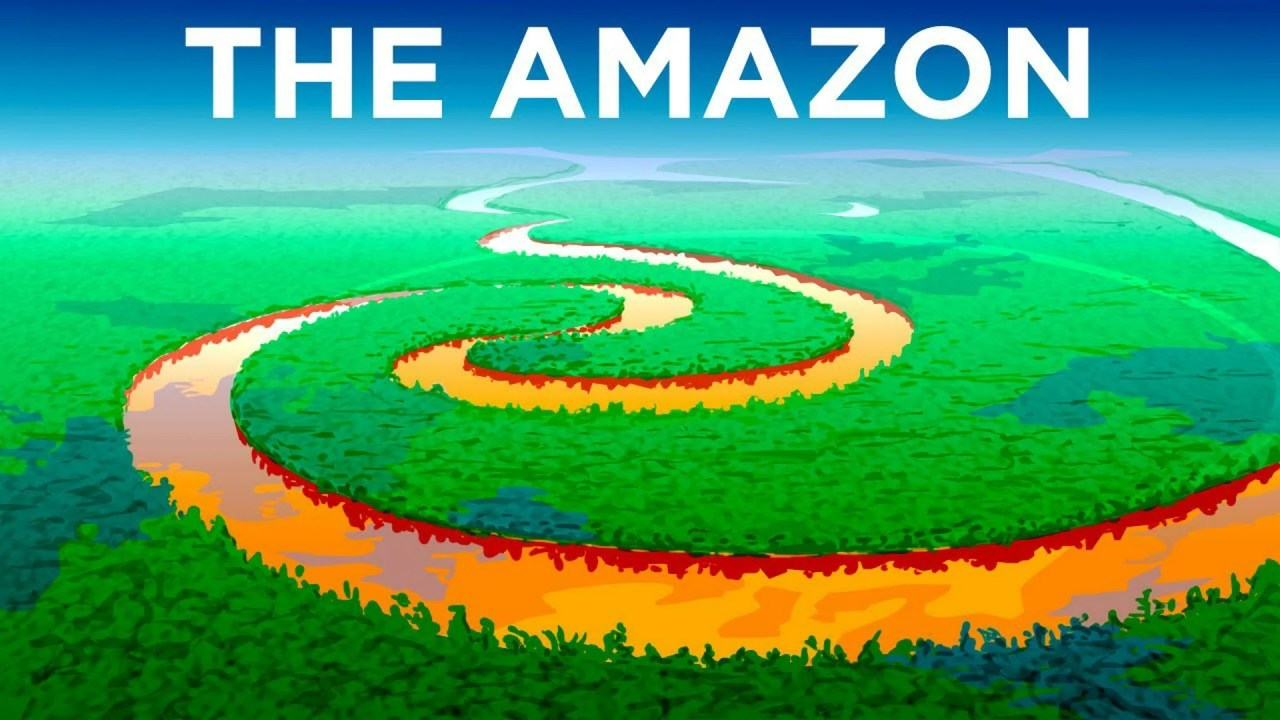The Amazon rainforest stretches over a huge portion of the South American continent. It is the world’s largest and most bio-diverse rainforest. Many call it the lungs of the world. The forest hides many mysteries. Today, we will try to uncover some of the surprises. Here are some Amazon rainforest facts.
It is mind-bogglingly huge
The biggest rainforest in the world is two and a half million square miles big. It stretches over nine Lain American countries. Fun fact: it stretches in France as well, even though France is European country. How? Well, the rainforest passes through French Guiana, an overseas territory of France.
![]()
Amazon passes mostly through Brazil, Bolivia, Peru, Ecuador, Colombia, Venezuela, Guyana, and Suriname.
If the rainforest was a country, it would be the ninth largest in the world. For perspective, The UK and Ireland could fit in the rainforest 17 times. It covers 40% of the South American continent.
Produces 20% of Earth’s oxygen
We said many consider the Amazon rainforest as the lungs of the world. That is not a far-fetched name. The forest products 20% of the oxygen on Earth. Because all of us need oxygen to survive, we can thank the Amazon rainforest for it.
It cycles a significant portion of Earth’s oxygen and at the same time, absorbs large quantities of carbon dioxide.
Amazing diversity
Diversity is a popular term we use nowadays. In Hollywood, diversity means you need actors and characters from different backgrounds.
And nothing can compete with the diversity of the Amazon rainforest. According to some scientific estimates, there are at least 40,000 plant species, 3,000 types of fish, 1,300 bird species, 430 mammals, and wait for it, more than 2.5 million different insects.
Speaking of it, the Amazon is home to some fascinating, but also deadly creatures. There, you can find electric eel, flesh eating piranha, poison dart frog, jaguars, venomous snakes, and many more.
Human diversity
There are not only animals in the rainforest. Quite a few humans live there too. Yes, when you look at images and photographs from Amazon, you look at the exotic wildlife, green nature, and so on.
![]()
But the human population is significant as well. There are around 21 million people that call the Amazon home. Around 400-500 indigenous American tribes live in the rainforest. Around 50 of them have never had contact with the outside world.
It is dark at the bottom
Large parts of the Amazon rainforest are almost completely black. There, only 1% of sunlight can make it through the thick canopy. When it rains in these places, it takes up to 10 minutes for water to seep down to the shrubbery bellow.
The canopy and its thickness is the main reason for the darkness. The top branches and leaves of the trees leave no room for anything to penetrate.
Most of the food on our plate comes from Amazon
You might not know this, but a lot of our food and medicine comes from the Amazon. Consider this for a moment, 80% of the world’s food varieties originate from the rainforest. Number 1 on that list, coffee. And that is a big enough reason to preserve the rainforest.
![]()
Speaking of medicine, 25% of modern pharmaceuticals contain Amazonian ingredients. And at the moment, only 1% of plant species have been tested for medicinal properties. Just imagine how much medicine can progress and grow if we preserve the rainforest and use it for something beneficial. The cure for many diseases and illness hides in the forest.
The US need the rainforest
You would think that the US are on a completely different continent and have nothing to do with the rainforest. But the Amazon influences rainfall patterns far more than its home countries. It also affects the rainfall pattern in the US.
It depends on Africa to survive
Speaking of the grand importance of the rainforest, here is another fun fact. Because the Amazon requires a continuous supply of fresh dust and phosphorus in the soil to thrive, Africa is the key for survival.
One study using satellite imagery and advanced dust cloud modelling technique found out that dust particles get picked up in the Sahara desert and travel through wind over the Atlantic before they settle in the Amazon.
It is just amazing to think how the Amazon rainforest is connected to every part of our planet.



